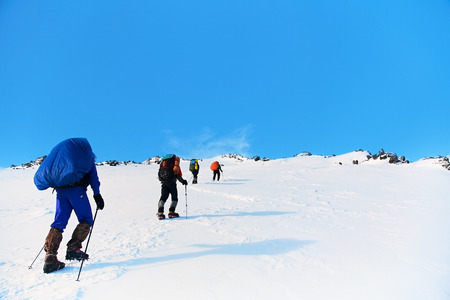Introduction to U.S. Trail Ratings
If youre new to hiking in the United States or planning your next adventure, understanding trail ratings is a great place to start. Trail ratings are used all across America’s national parks, state parks, and local trails to help hikers know what to expect before they hit the path. These ratings—usually labeled as Easy, Moderate, or Difficult—give you quick insight into how challenging a hike might be. But there’s more to these labels than just a simple word.
Trail ratings exist for several important reasons. First and foremost, they help keep hikers safe. Not every trail is right for every hiker, and knowing the difficulty level helps you avoid getting in over your head. For families with young kids, people new to hiking, or those with physical limitations, an “Easy” trail means you can enjoy nature without unnecessary risk. On the other hand, seasoned hikers looking for a challenge can seek out “Difficult” trails that test their skills and endurance.
Besides safety, trail ratings also let adventurers plan better. If you know how tough a trail is likely to be, you can pack the right gear, bring enough water and snacks, and set aside enough time for your hike. Plus, having standardized ratings makes it easier to compare different hikes across regions—even if you’re traveling from the Rockies to the Appalachians.
Why Do Trail Ratings Matter?
- Safety: Helps prevent accidents by guiding hikers toward trails suitable for their fitness and experience level.
- Planning: Allows hikers to choose routes that fit their schedule, energy level, and available gear.
- Inclusivity: Makes outdoor spaces accessible by showing which trails are family-friendly or suitable for beginners.
How Are Trail Ratings Determined?
Most U.S. land agencies use a combination of factors to rate their trails:
| Factor | Description |
|---|---|
| Distance | Total length of the trail (miles or kilometers) |
| Elevation Gain | How much you climb from start to finish (feet or meters) |
| Trail Surface | Smooth dirt paths vs. rocky or uneven terrain |
| Obstacles | Roots, rocks, water crossings, steep drop-offs |
| Remoteness | Access to help in case of emergency; how far from civilization |
The Takeaway for Hikers
No matter where you’re hiking—from California’s coastal cliffs to New England’s leafy forests—understanding trail ratings is key to having a fun and safe day outdoors. Next time you see an “Easy,” “Moderate,” or “Difficult” sign at a trailhead, you’ll know it’s not just a suggestion—it’s valuable info that can make or break your adventure!
2. What Qualifies as an Easy Trail?
When planning a hike in the United States, understanding what makes a trail “easy” can help you pick the right adventure for your fitness level and hiking experience. Easy trails are great for beginners, families with young kids, or anyone looking for a relaxed outdoor walk. Here’s what typically qualifies as an easy trail in the U.S., along with some popular examples you might want to check out.
Key Characteristics of Easy Trails
| Feature | Description |
|---|---|
| Distance | Usually less than 3 miles (about 5 km) round trip |
| Elevation Gain | Minimal elevation gain, often less than 300 feet (about 90 meters) |
| Terrain Type | Well-marked, wide, and mostly flat paths; surfaces can be gravel, packed dirt, or paved |
| Trail Conditions | No technical skills required; few obstacles like roots or rocks; may be stroller-friendly or wheelchair accessible in some cases |
What to Expect on an Easy Trail
Easy trails are designed to be approachable for people of all ages and abilities. You won’t find steep climbs or rough terrain. Instead, expect gentle slopes, scenic views, and plenty of spots to rest along the way. Many easy trails are loops or out-and-back routes, making it simple to turn around if needed.
Popular Examples of Easy Trails in National and State Parks
- Lower Yosemite Fall Trail (Yosemite National Park, California): A short 1-mile loop with minimal elevation gain, offering stunning views of Yosemite Falls.
- Cades Cove Loop Road (Great Smoky Mountains National Park, Tennessee): This paved 11-mile road can be driven or biked, but there are several easy walking paths along the way where wildlife sightings are common.
- Bryce Canyon Rim Trail (Bryce Canyon National Park, Utah): The section between Sunrise and Sunset Points is flat and only about half a mile long, perfect for families and beginners.
- Pebble Beach Trail (Harris Beach State Park, Oregon): Less than a mile long and mostly flat, this trail gives you beautiful ocean views without much effort.
- The Flatiron Rock Trail (Smith Rock State Park, Oregon): An easy stroll through unique rock formations with little elevation change.
Quick Tips for Enjoying Easy Trails
- Check park websites for accessibility info—some easy trails are wheelchair friendly.
- Bring water and sun protection, even for short walks.
- Watch for signs marking the trail so you stay on track.
- If you’re hiking with kids or pets, look for family- and dog-friendly options.
Easy trails are all about enjoying nature at your own pace. Whether you’re taking a peaceful forest walk or exploring iconic national parks on foot for the first time, these trails make it possible for everyone to get outside and explore America’s great outdoors.

3. Understanding Moderate Trails
What Makes a Trail Moderate?
In the U.S., moderate trails offer a step up from easy hikes, providing a bit more challenge without being overwhelming. These trails are popular among hikers looking to push themselves, enjoy scenic views, and experience a greater sense of accomplishment. Typically, moderate trails have more elevation gain, uneven terrain, and longer distances compared to easy trails. You might encounter rocky paths, tree roots, switchbacks, or steeper sections that require steady footing.
Potential Challenges on Moderate Hikes
While moderate hikes are manageable for most people with some hiking experience or basic fitness, they do come with their own set of challenges:
- Elevation Gain: Expect climbs that may get your heart rate up.
- Rough Terrain: Watch out for rocks, mud, or loose gravel.
- Weather Exposure: Longer trails can expose you to changing weather conditions.
- Navigational Skills: Some moderate trails may be less clearly marked than easy paths.
Recommended Gear for Moderate Trails
| Item | Description |
|---|---|
| Sturdy Footwear | Hiking boots or trail shoes with good grip for uneven ground |
| Backpack | A small daypack for water, snacks, and extra layers |
| Weather Protection | Rain jacket or sun hat depending on the forecast |
| Trekking Poles (Optional) | Adds stability on inclines and descents |
| Navigation Tools | Map, compass, or GPS app in case cell service is spotty |
| First Aid Kit | Covers minor scrapes or blisters along the way |
Fitness Levels Suited for Moderate Trails
You dont need to be an athlete to enjoy moderate trails in the U.S., but basic physical fitness helps. If you can comfortably walk 4-6 miles (about 6-10 km) on varied terrain and climb stairs without much trouble, youre likely ready for these hikes. Its normal to feel winded during steeper sections—just take breaks as needed and pace yourself.
4. Navigating Difficult Trails: What to Expect
What Makes a Trail “Difficult”?
Difficult trails in the U.S. are designed for experienced hikers who are ready for a real challenge. These trails often include steep climbs, rocky paths, and rough terrain that require good balance and stamina. The distance can be much longer than easy or moderate hikes, and you might even need to use your hands for scrambling up rocks or navigating tricky sections. Some difficult trails also demand advanced navigation skills, especially in remote areas where trail markers are sparse.
Key Features of Difficult Trails
| Feature | What to Expect |
|---|---|
| Steep Climbs | Inclines can be very steep, sometimes requiring you to use both hands and feet to move upward. |
| Rough Terrain | The path may be rocky, muddy, or uneven. Expect loose stones, roots, and narrow ledges. |
| Long Distances | Difficult trails usually cover more miles and can take all day or even multiple days to complete. |
| Scrambling Sections | You may need to climb over boulders or steep rock faces without the help of ropes. |
| Advanced Navigation | Some parts may not have clear signs. You might need a map, compass, or GPS to stay on track. |
Typical Examples of Difficult Trails in the U.S.
- Mount Whitney Trail (California): Long distance, high elevation gain, and challenging switchbacks.
- The Presidential Traverse (New Hampshire): Steep climbs, exposed ridges, and unpredictable weather.
- Zion’s Angels Landing (Utah): Narrow pathways with steep drop-offs requiring careful footing and sometimes holding onto chains for support.
Tips Before You Go:
- Check the Weather: Conditions can change quickly on difficult trails, especially at higher elevations.
- Pace Yourself: Take breaks as needed and don’t rush—safety comes first!
- Bring Extra Supplies: Pack plenty of water, snacks, navigation tools, and emergency gear.
- Know Your Limits: If you’re new to tough hikes, consider going with a group or hiring a local guide.
Tackling a difficult trail is a serious adventure that requires preparation, skill, and respect for the outdoors. Always research your chosen hike ahead of time and make sure you’re up for the challenge!
5. Tips for Choosing the Right Trail and Staying Safe
How to Research Trail Ratings
Before you lace up your hiking boots, it’s important to know what kind of trail you’re getting into. In the U.S., trail ratings like Easy, Moderate, and Difficult are designed to give you a sense of what to expect. Here’s how you can find the right information:
| Resource | What You’ll Find |
|---|---|
| Official Park Websites (NPS, State Parks) | Trail descriptions, maps, ratings, and any alerts or closures. |
| Apps (AllTrails, Gaia GPS) | User reviews, real-time conditions, photos, and elevation profiles. |
| Local Outdoor Stores or Visitor Centers | Personal recommendations and up-to-date local info. |
| Guidebooks & Blogs | Detailed write-ups and tips from experienced hikers. |
Preparing for Your Hike: What to Consider
Once you pick a trail that matches your skill level and goals, preparation is key to having a safe and fun time. Here are some simple steps:
- Check the Weather: Conditions in the U.S. can change fast. Look up forecasts for the specific area you’ll be hiking in.
- Packing Essentials: Bring enough water, snacks, navigation tools (map/GPS), first-aid kit, sun protection, layers of clothing, and a headlamp or flashlight—even for easy trails.
- Let Someone Know: Tell a friend or family member where you’re going and when you plan to return.
- Shoes Matter: Wear sturdy footwear that fits well and suits the trail’s difficulty—trail runners for easy hikes, hiking boots for rougher ground.
- Know Your Limits: Choose a trail that matches your current fitness level. It’s okay to start with easier hikes before taking on something more challenging.
Packing Checklist Example by Trail Rating
| Item | Easy Trail | Moderate Trail | Difficult Trail |
|---|---|---|---|
| Water (per person) | 1 liter | 2 liters+ | 3 liters+ |
| Snacks/Food | ✔ | ✔ | ✔ + extra energy foods |
| Navigation (Map/App) | ✔ | ✔ | ✔ |
| First Aid Kit | ✔ | ✔ | ✔ + blister care |
| Lighter/Matches | – | ✔ | ✔ |
| Trekking Poles | – | ✔ (optional) | ✔ (recommended) |
| Sunscreen/Bug Spray | ✔ | ✔ | ✔ |
| Layers/Rain Gear | If needed | ✔ | ✔ (essential) |
| Headlamp/Flashlight | If late start | ✔ | ✔ |
| Emergency Blanket/Whistle | – | If remote area | ✔ |
The Importance of Leave No Trace Principles
No matter which trail rating you choose, being a responsible hiker helps protect America’s wild places for everyone. The Leave No Trace principles are simple guidelines every hiker should follow:
- Plan Ahead and Prepare: Know the rules of the area and bring what you need.
- Travel and Camp on Durable Surfaces: Stick to marked trails and campsites to avoid damaging plants.
- Dispose of Waste Properly: Pack out all trash—including food scraps—and use restrooms when available.
- Leave What You Find: Don’t pick flowers or take rocks as souvenirs.
- Minimize Campfire Impact: Use camp stoves where fires aren’t allowed; always put fires out cold.
- Respect Wildlife: Watch animals from a distance—never feed them.
- Be Considerate of Other Visitors: Yield to uphill hikers, keep noise down, and share the trail with bikers or horses if needed.
Your Responsible Hiking Checklist
- Select a trail based on honest self-assessment—remember that “Difficult” means just that!
- Packed all 10 essentials? Double-check before leaving home.
- Brought a small bag for trash? Even apple cores count as litter in many parks.
- Knew local wildlife rules? Some U.S. parks require bear spray or have leash laws for dogs.
- Told someone your route? Safety first, always!
A little planning goes a long way towards having an awesome—and safe—adventure on America’s trails!


